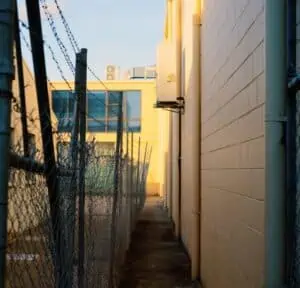How to Weld a Wrought Iron Fence?
Wrought iron fences are a popular choice for many homeowners. They offer a classic look that is durable and easy to maintain. They are also available in many colors, making them a versatile option for a variety of properties.
(Looking for”metal horizontal fencing repair“? Contact us Today!)

How to Weld a Wrought Iron Fence?
Welding wrought iron is a relatively simple process, and it can be done by just about anyone with some welding knowledge. The key is to use the correct materials and techniques. If you are not familiar with welding, consider hiring a professional.
The most important step in welding wrought iron is selecting the proper material. You should be looking for metals that have high tensile strength. The higher the tensile strength, the better the weld will hold. You can also find a metal that is corrosion-resistant, which will keep the fence from rusting or corroding.
Other factors that should be considered when choosing a material include cost and durability. Generally, a quality wrought iron fence will last 20 to 50 years before it needs to be replaced. It is best to avoid lower-quality fencing, especially if you plan to stay in your home for a long time.
Compared to other types of fences, wrought iron fences are more expensive to buy and install. The cost depends on the gauge, or thickness, of the bars. The gauge is usually 12 millimeters but can be customized to suit the customer’s specific needs.
When purchasing wrought iron, ask the dealer about the type of metal used. It is possible that a supplier may use steel instead of genuine wrought iron, as it is cheaper to manufacture and easier to work with.
You can also find steel with mold marks that imitate the grain of true wrought iron. This is an excellent compromise for those who want to get the appearance of a genuine wrought iron fence without the higher price tag.
A common way to weld a wrought iron fence is through manual metal arc or shielded metal arc (MMA or SMAW) welding. However, this can be difficult to weld correctly if the wrought iron is of poor quality. For this reason, it is recommended to weld a sample of the actual iron you are welding before beginning your project.
Another option is to weld using a filler wire that contains aluminum and silicon as de-oxidizers. The de-oxidizers help to reduce the oxidation of the molten iron and give a more even weld.
Once the weld is complete, you can begin to assemble the fence. You can weld the bars together with a filler bar or MIG wire, or you can simply tack-weld the parts together.
When you are ready to start your project, make sure to have a lot of supplies on hand. You’ll need a Metal saw, welding equipment and safety gear, filler bar or MIG wire, welding gloves, C-clamps, and a vise.
The length of your wrought iron fence will determine how much material you need to purchase. It is also important to measure your property and add up the outer borders.

